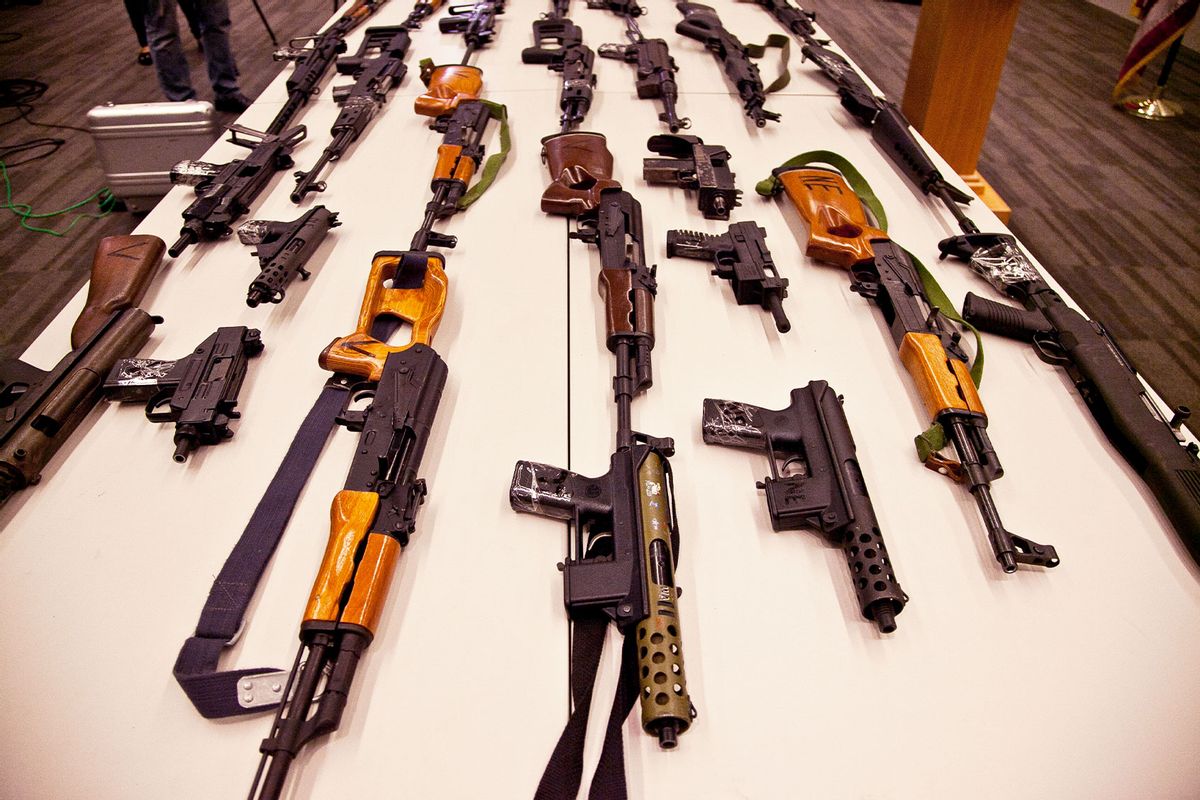Fueled by right-wing politicians and the powerful gun lobby, nearly three-quarters of firearm owners in the United States believe the enduring myth that a gun at the ready will keep them safer—but a new analysis offers the latest hard evidence that guns simply make life more dangerous and deadly for everyone.
The Center for American Progress (CAP) joined gun violence research group GVPedia to release an issue brief debunking the falsehoods pushed by the National Rifle Association (NRA) and other pro-gun groups, which, looking to "counter the horrors of everyday gun violence in America... masterfully constructed a narrative based on the myth of a 'good guy with a gun' using their weapon defensively to stop an armed assailant before harm can be done."
Listening to former NRA CEO Wayne LaPierre and the right-wing lawmakers who count on the gun lobby's endorsements, one could hardly be blamed for conjuring an image of a "good guy with a gun" who frequently stops a violent attack from happening—but the analysis shows how faulty research in the 1990s underpinned such claims.
Surveys at the time, including a widely-cited study by Gary Kleck and Matt Gertz, estimated that between 760,000 and 2.5 million defensive gun uses (DGU) occurred annually.
But the Harvard Injury Control Research Center found two years later that fewer than 550,000 burglaries occurred in gun owners' homes annually, while Kleck and Gertz had estimated that "guns were used for self-defense during burglaries approximately 845,000 times."
"Burglary victims would have needed to use their gun defensively in more than 100% of cases, which is, of course, impossible," the issue brief reads.
Until the myth of the "good guy with the gun" is defeated, said Devin Hughes, founder and president of GVPedia, "Americans will continue buying firearms in the mistaken belief that those guns will make them safer, and gun violence will continue unabated."
"Accurate information is critically important in fighting America’s epidemic of gun violence. Just as important, however, is countering inaccurate information," Hughes added.
CAP also analyzed data on DGU from the National Crime Victimization Survey (NCVS), which estimated just 70,000 such instances per year.
The group found that nine times as many people report being victimized by a person with a gun than being protected by a firearm. Respondents to two Harvard surveys taken in 1996 and 1999 were three times as likely to report being threatened or victimized with a gun than having used one to protect themselves.
In addition to putting a household at higher risk of an accidental gun injury or death, gun ownership also is not "the safest means of self-protection," CAP found.
NCVS data from 2007-11 showed that of the 14,145 crime incidents in which a victim was present, less than 1% involved DGU.
Eleven percent of victims who did not use a gun defensively reported being injured during the altercation; almost the same amount, 10.9%, reported injuries in cases of the victim using a gun.
More than 38% of victims who used a gun defensively reported property loss, while less than 35% who defended themselves with a different weapon reported that property was stolen during the incident.
"The idea that one is not safe unless they are carrying a gun is perhaps the most personal and insidious myth constructed by the gun lobby," said CAP. "What does improve safety is stronger gun laws, improved clearance rates, and investments in community violence intervention programming."
The brief noted that people who intend to use their guns defensively are more likely to keep them "unlocked, readily accessible, and loaded, substantially increasing the risk of unauthorized access by a minor"—suggesting that a parent with a gun for self-protective purposes is unlikely to successfully use it for self-defense, and is actively endangering family members by having the gun.
"Similar to adult cohabitants, children living in a home with a firearm are at a greater risk for unintentional injury and death, homicide, and suicide," said CAP. "Moreover, their unauthorized access to household firearms can put those outside the home at risk, with more than 74% of firearms used in school shooting incidents obtained from the student's home or from the home of a relative or family friend."
Citing a number of examples of people in states with so-called "Stand Your Ground" laws, which say that gun owners have a right to use their firearms if they believe they are being threatened, CAP and GVPedia showed how, contrary to the narrative about the "good guy with a gun," most DGU cases "are harmful to society" and involve innocent people being killed due to the presence of a firearm.
"Emboldened by a 'shoot first, ask questions later' culture, too many armed individuals have used deadly force as a first response, rather than a last resort," said CAP. "More concerning, gun homicides in which white shooters invoked SYG after killing Black victims were determined justifiable by the legal system five times more often than when the situation was reversed, indicating serious racial disparities in the defensive use of firearm."
The group's research showed how the gun industry and its backers have used "the manipulation of fear, perversion of self-defense, and falsified statistics" to weaken "the public's ability to properly inform themselves of the risks associated with gun ownership," said Allison Jordan, research associate for gun violence prevention at CAP.
"In untangling the myth of defensive gun use, one thing is abundantly clear," said Jordan. "If safety is the goal, guns are not the answer."



Shares